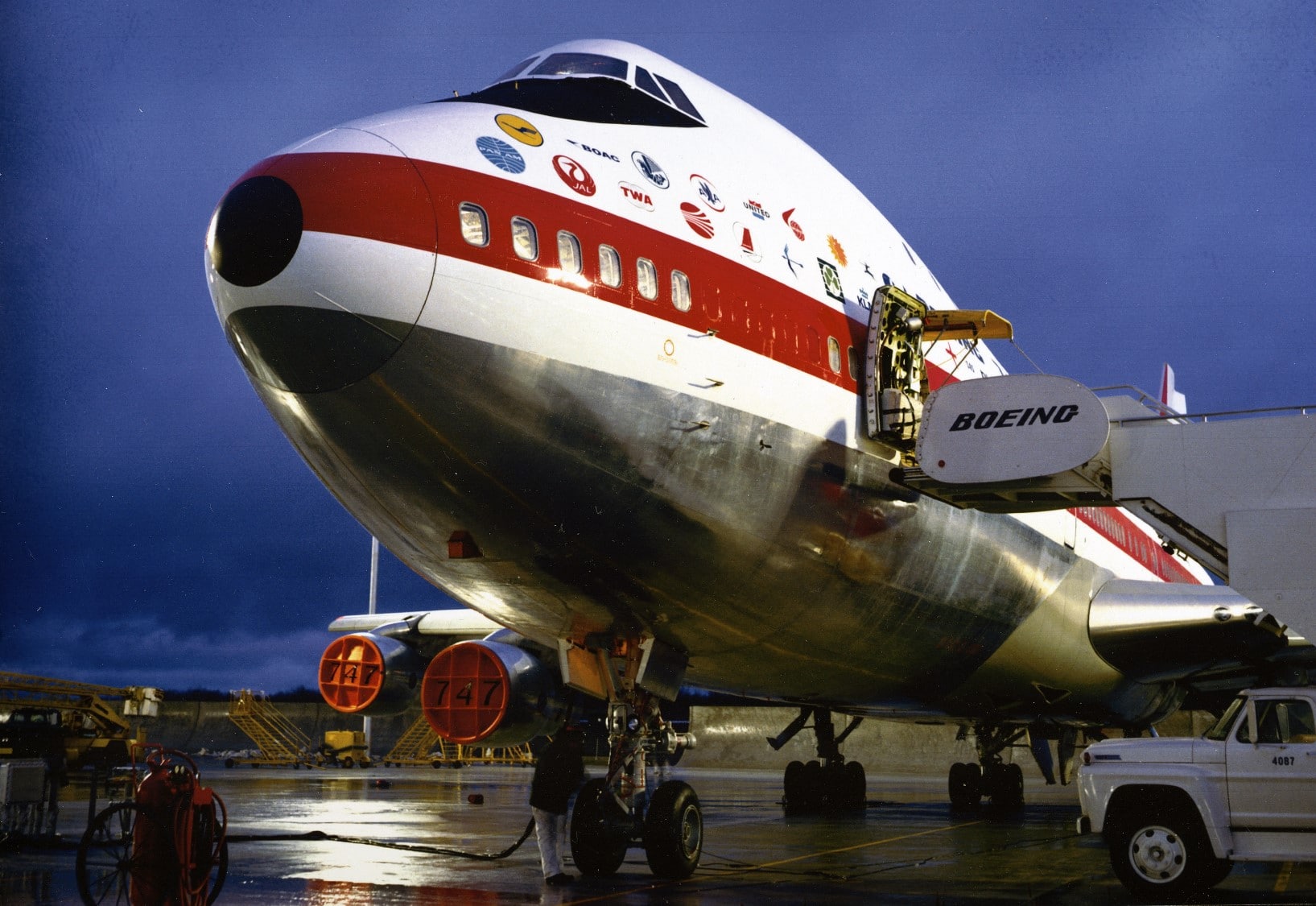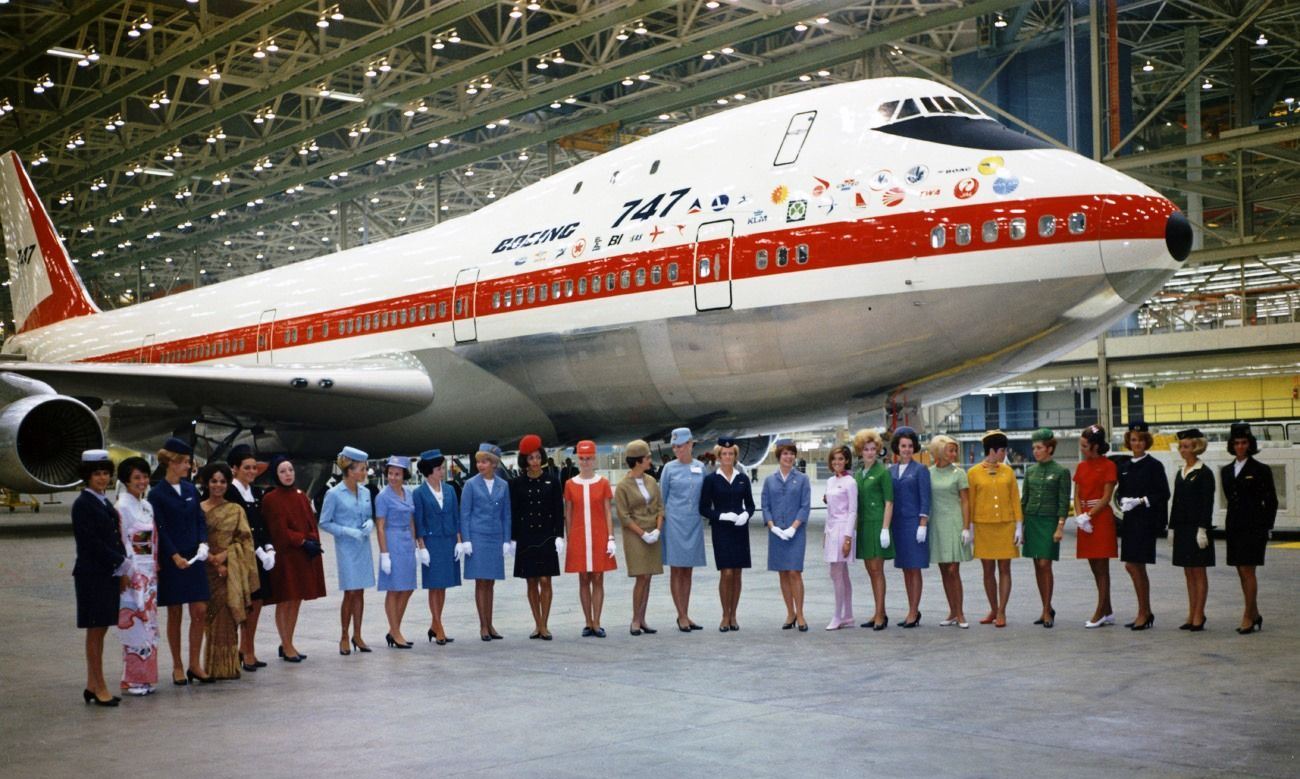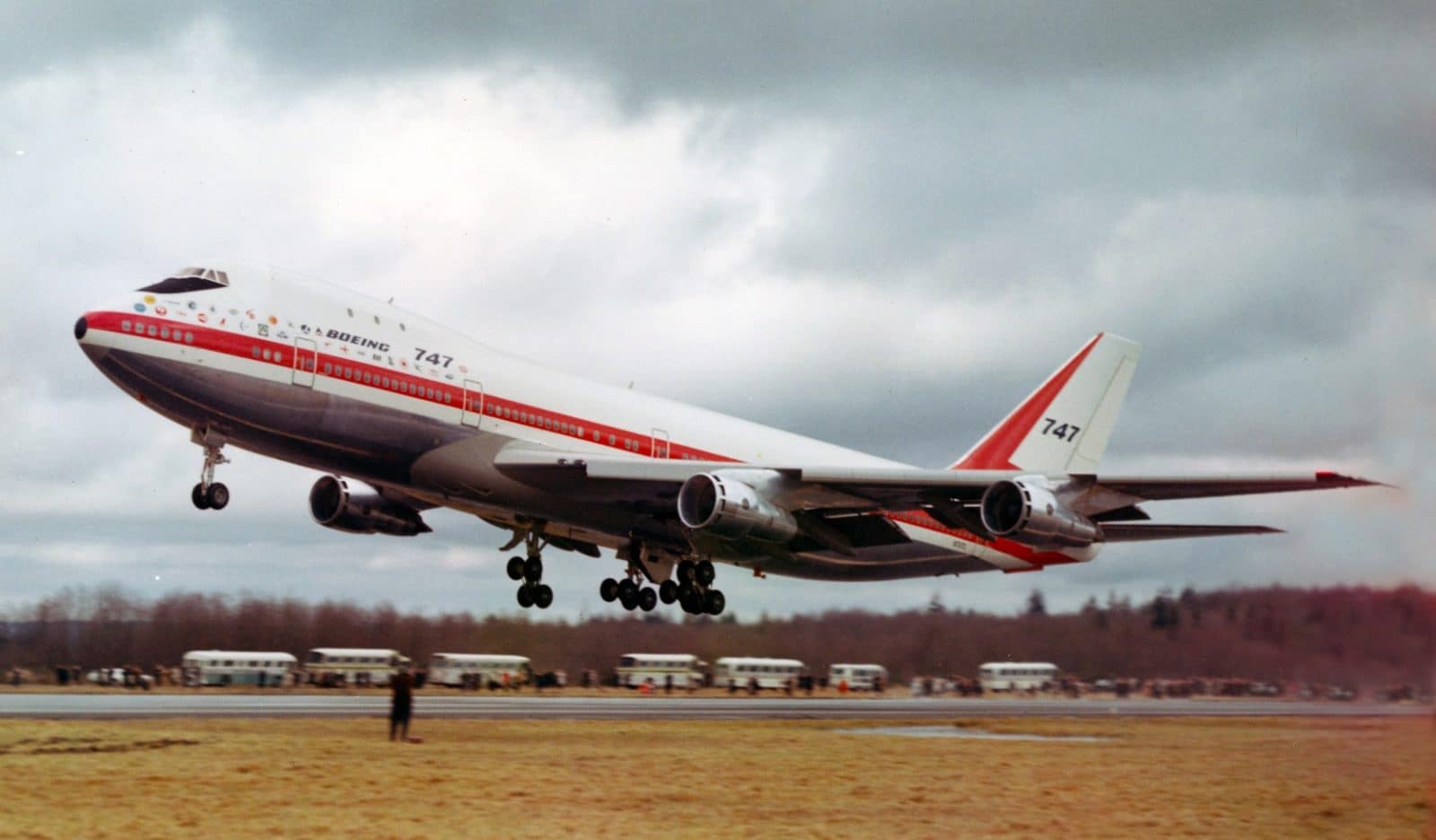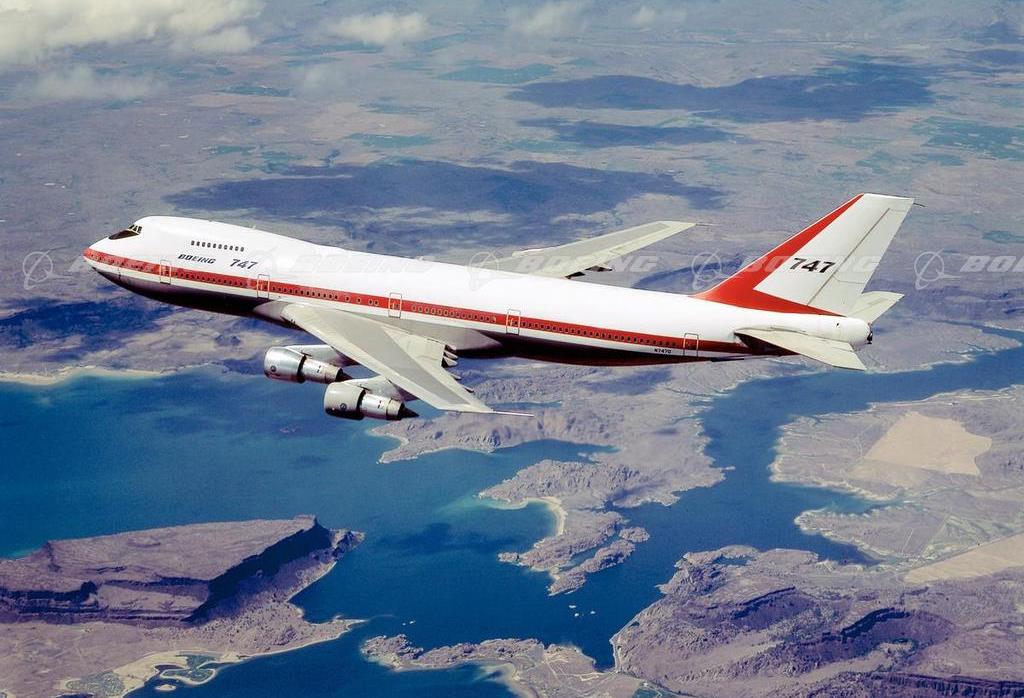The Gamble Certainly Paid Off for the Premiere Jumbo Jet Builder
Boeing commissioned the film “The New Era: Flight Testing the 747 Superjet” for the company’s program management to document what was likely the company’s biggest gamble ever- the design, development, and manufacture of the Boeing 747. The sense of urgency associated with getting the first 5 examples of the 747 tested and delivered is palpable in the film. The footage is in great shape and it looks about as good as film transferred from that era can look. After you watch the film you will almost certainly know things about the 747 test effort you didn’t know before. The film was uploaded to YouTube by PeriscopeFilm.
[youtube id=”H5UxJ4-mpU0″ width=”800″ height=”454″ position=”left”]
Double the Everything
When the 747 was conceived the airline travel industry was in turmoil. In 1964 Boeing had competed for the CX-Heavy Logistics System (CX-HLS) which was eventually won by Lockheed’s C-5A Galaxy. But the design and development effort invested in their CX-HLS entry pushed Boeing to create a new jumbo jetliner powered by the same engines as the company’s CX-HLS design. Pan American World Airways (Pan Am) president Juan Trippe had some influence because he had gone to Boeing and requested an airliner with double the everything of a 707. During the design and development of the 747, supersonic transports were still thought to be the airline travel solution of the future.

Convertible Out of the Gate
The 747 was designed from the outset to be a convertible. That is, to be configurable as a passenger jet or as a cargo hauler. Seating arrangements evolved from a full-length double-deck fuselage (seven-across seating above eight-across seating below) to the wider single deck. But the cockpit stayed up on what would have been the upper deck in order to facilitate a nose-mounted cargo door. Boeing looked at placing the cockpit below the main deck to clear the cargo door but the idea didn’t get out of the design stage. That aircraft would have looked more like the Airbus Beluga.

New-Tech Thrust Generators
One of the many new technologies in the 747 was those Pratt & Whitney JT9D high-bypass turbofan engines. These power plants were designed and built specifically for the 747. General Electric was working on the CF6 high-bypass turbofan engines for the C-5A Galaxy at the time. The high bypass turbofan concept was aimed at delivering double the power of a turbojet engine while consuming a third less fuel. By the time late 1966 rolled around, Boeing, Pratt & Whitney, and Pan Am had agreed to co-develop the JT9D– meaning Pan Am would be able to influence the design of the aircraft to a degree never seen before or since.

Safety Built-In From the Get-Go
Safety concerns, understandably a hot topic with what was to be the world’s largest airliner for years to come, were addressed in multiple ways. The designers built in structural redundancy, redundant hydraulic systems, quadruple main landing gear and dual control surfaces. In order to be able to operate the 747 from existing airports, the designers near-full length leading edge slats and a fairly complex three-part slotted trailing edge flaps. Those flaps would increase wing area by 21 percent and lift by 90 percent when fully extended.

A New Kind of Factory for a New Kind of Airliner
Another aspect of the design and development of the 747 was a facility in which to build them (or the lack thereof). Boeing had to build a new plant to house the 747’s manufacturing and assembly efforts. The company chose a site in Everett, Washington for the 747 plant. Building the plant turned out to be nearly as big a challenge as building the 747. The full-scale mockup of the 747 was built inside the new factory- before the roof was complete above it. In 1968 the 747 assembly plant was the largest building by volume ever built on the planet. Expanded several times over the years, it still is.

Rolling Out 747 #1
The first 747 was rolled out of the Everett assembly building on 30 September 1968. The press and representatives from the 26 pre-ordering airlines were there to greet it, along with justifiably proud Boeing employees who had delivered the jetliner. The 747, named City of Everett, first flew on 9 February 1969 and was unveiled to the public at the Paris Air Show in 1969. The film is about the test and evaluation effort that followed. The 747 received its airworthiness certificate in December of 1969. Boeing went on to build more than 1,500 Superjets. Their $1 billion-plus gamble paid off big time.
BONUS VIDEO
Enjoy “The Outer Limits” by Boeing, made to commemorate the rollout and initial flight testing of the 747. This film was also uploaded to YouTube by PeriscopeFilm.
[youtube id=”yXXsWCCTHWM” width=”800″ height=”454″ position=”left”]

